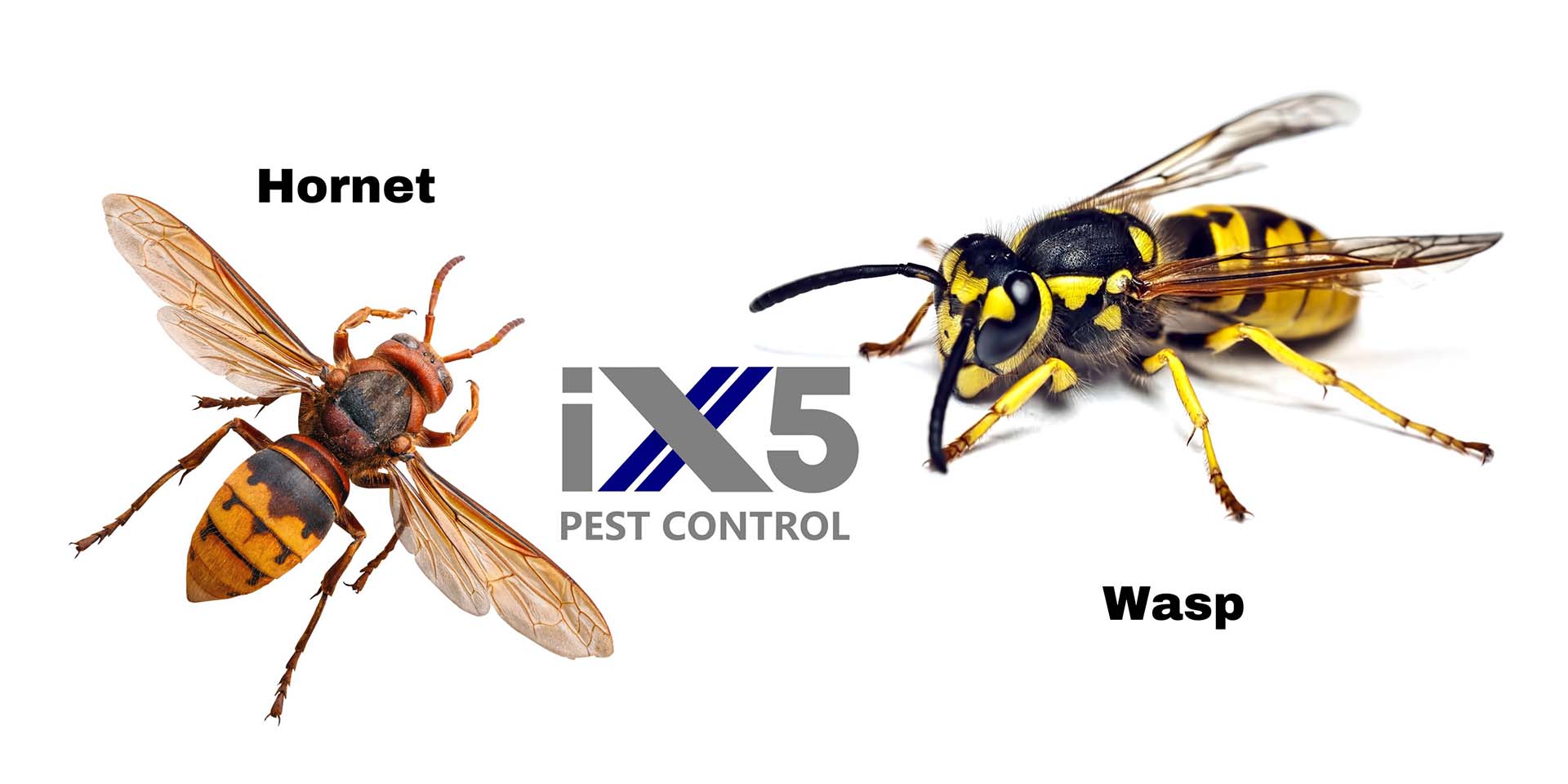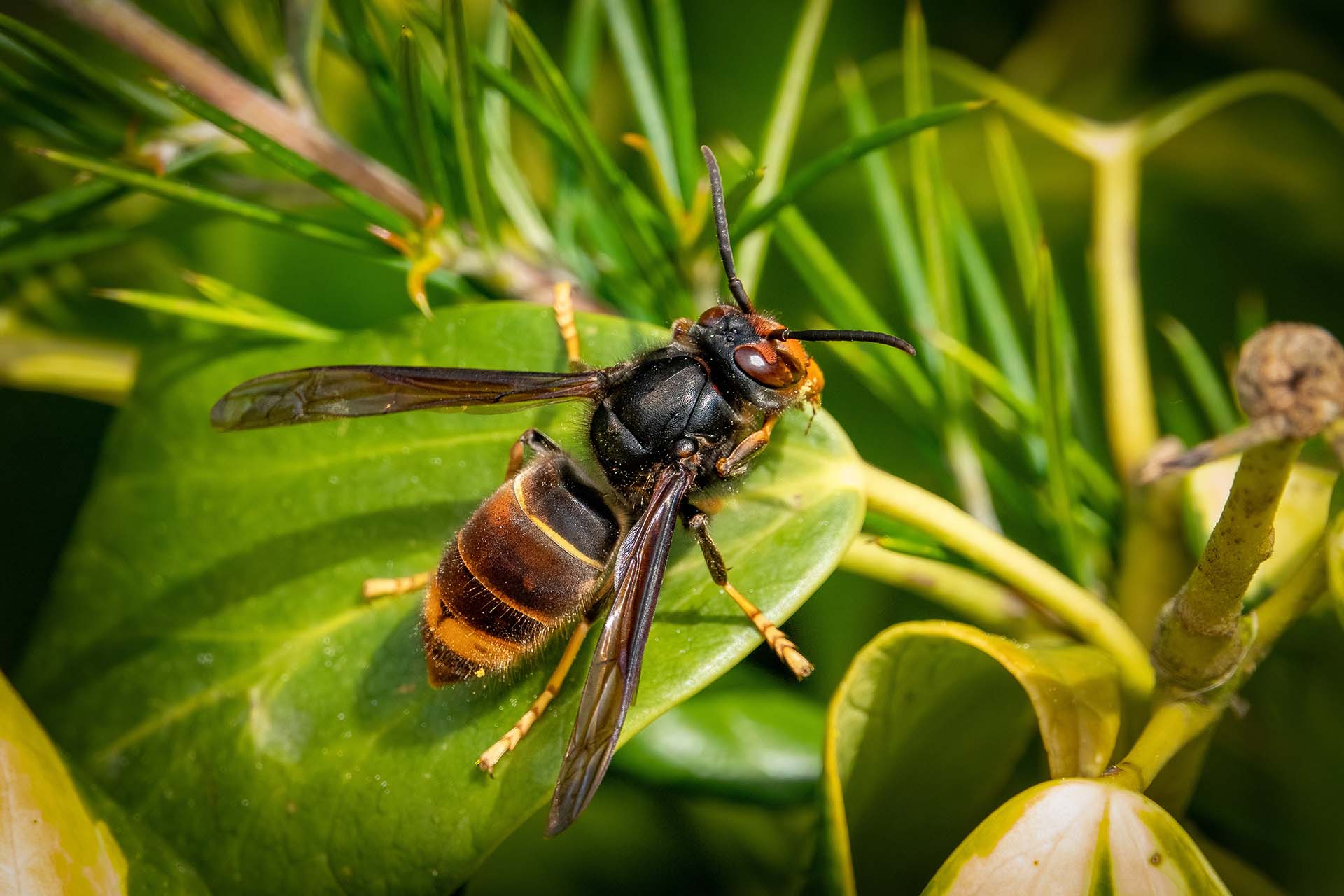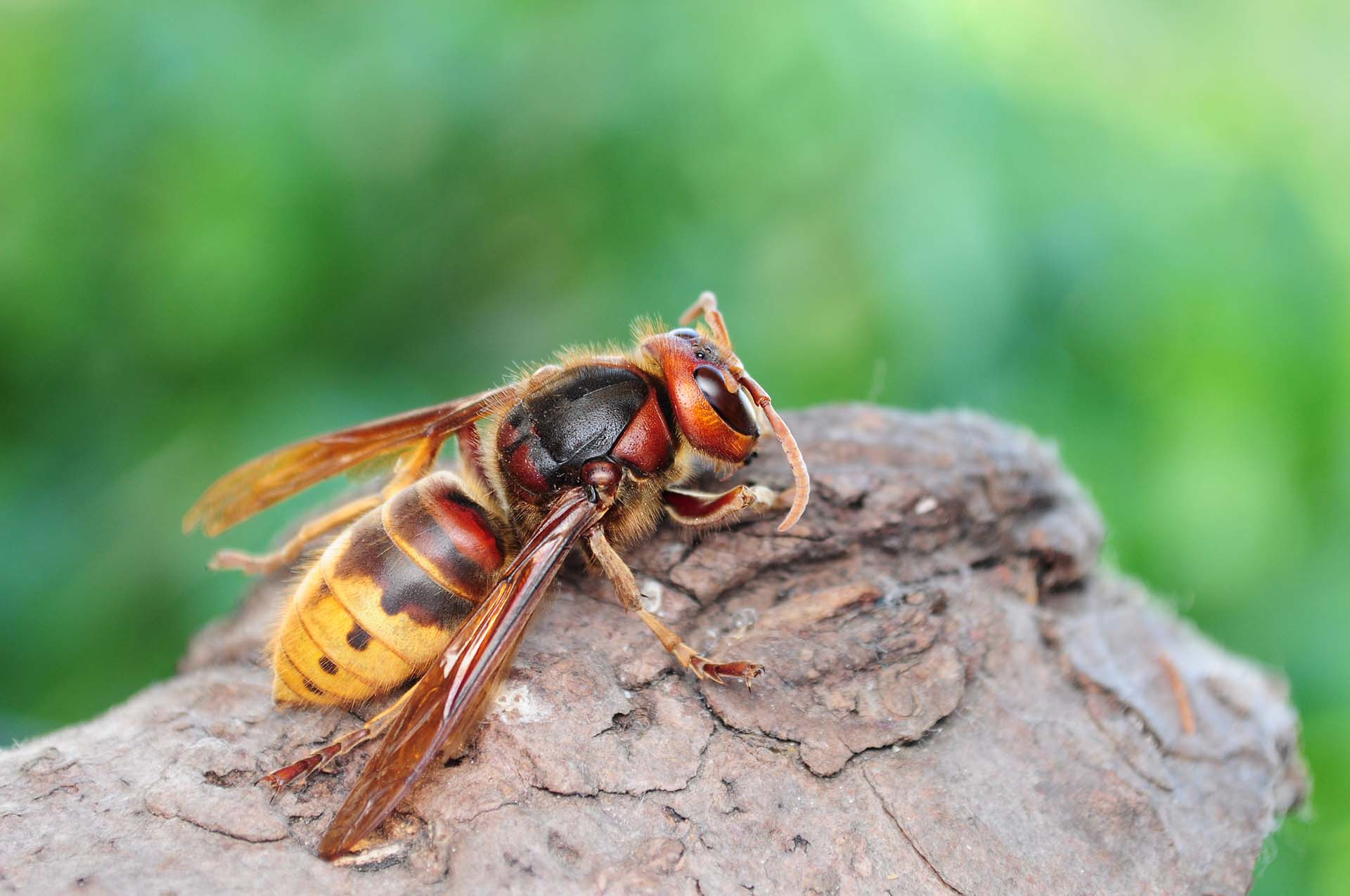How to Identify a Hornet in the UK
There seems to be some speculation regarding hornets, especially on social media, so in this article we hope to help clear the confusion and tell you more about the hornet and in particular how to tell a hornet and a wasp apart. There’s a range of key information that we can use to differentiate between these two insect types, including variations of species found in the UK. With this knowledge, you’ll be better equipped to understand what you’re dealing with and make the right call if pest control is required.

Understanding the Basics: Hornets vs Wasps
Hornets and wasps are part of the same family – the Vespidae family – and while they may seem similar to some at first glance, there are a number of distinguishing characteristics that set them apart.
The European hornet, the species native to the UK, is significantly larger than most wasps, typically measuring between 2 and 3.5cm long. They have a brown and yellow-striped abdomen as opposed to the black and yellow pattern of wasps. Hornets also have a larger head, with a pronounced clypeus (the area of the face just above the jaws) and larger eyes compared to wasps. Wasps, on the other hand, are often smaller with a thinner waist.
Behaviour and Diet of Hornets
Hornets are generally less aggressive than wasps, although they can sting repeatedly if they feel threatened. It’s crucial to remember that a hornet’s sting is more painful than a wasp’s due to their venom. However, they are generally docile creatures unless provoked.
Hornets are omnivorous. They mainly feed on insects, including large beetles, dragonflies, and other smaller species. This diet makes them very effective at natural pest control in the ecosystem. Hornets also eat sap and fallen fruit, and, like bees, they can play a role in pollination, although not to the same extent as their buzzing counterparts.
Hornet Habitats and Activity Period
Hornets generally prefer living in wooded areas where they build nests in trees, shrubs, but will also be found nesting within wall cavities, chimneys and other locations. Hornets’ nests are primarily composed of chewed wood pulp and saliva, giving them a paper-like appearance. Their nests look very similar to Wasp nests.
Hornets are most active during the warmer months, generally from May to late August, with activity declining as we head into autumn. If you discover a hornet’s nest during this time, it’s best not to try and remove it yourself due to the potential risk of stings.

The Asian Hornet
An invasive species that is prolific in France and Jersey has appeared a few times in the UK is the Asian hornet, a species native to Asia and now becoming more common in Europe. Asian hornets are smaller than European hornets, measuring around 2.5cm, and are much darker, with a more uniform colouration including a predominantly dark brown or black velvety body and a striking yellow-orange band on the fourth abdominal segment. The legs also have yellow tips.
The presence of an Asian hornet in the UK is of significant concern due to its impact on honeybees and other pollinators. They have been known to decimate bee populations by preying on them, causing a negative impact on our ecosystem. If you spot an Asian hornet then you should report this to the Centre for Ecology & Hydrology this can help contribute to their control efforts and protect our local pollinators. The Asian Hornet Watch app can also be downloaded for free for Android via Google Play and for iOS via iTunes.
What To Do If You Have a Hornet Nest
If you come across a hornet’s nest, particularly during their active period, we don’t recommend trying to treat it yourself. The same advice applies if you believe you’ve spotted an Asian hornet. Contact a professional pest control company, such as us at iX5 Pest Control, who have the knowledge and equipment to deal with these situations safely and effectively. We offer hornet pest control services for both domestic and business premises in Northampton, Daventry, Rugby, Market Harborough, Towcester, Brackley, Wellingborough, Kettering, Corby, Olney and all of the surrounding areas. Our team of specialists are available both evenings and weekends at no extra cost. Should you require assistance call us on 01604 328545, email [email protected] or use our simple contact form.
Asian hornet sightings should be reported here.
Understanding the differences between hornets and wasps is the first step towards dealing with a potential infestation. With this information, you can make an informed decision on the best course of action, prioritising your safety and the preservation of our natural ecosystem. If however, you are uncertain what pest is present, then we can assist.


I found large hornet in my house 3/12/23 bear in mind it’s about -2.5 degrees outside,this thing IS larger than normal but can’t decide what to do with it,do I report it or just let it go,it’s a really dark colour with obvious yellow band around it’s head.
Thank you for your reply to our blog. It is likely that the hornet you found may be a queen hibernating in your home over the winter. However it is not possible to advise whether it might be a European Hornet (our common hornet in the UK) or an Asian Hornet (the invasive species which is notifiable) from the information provided. There is more information about Asian Hornets on the British Beekeepers Association website which may help https://www.bbka.org.uk/listing/category/asian-hornet-vespa-velutina If you are uncertain but suspect it may be an Asian Hornet then it would be worth reporting. If you actually have the hornet, or have photos of it this would help with identification.